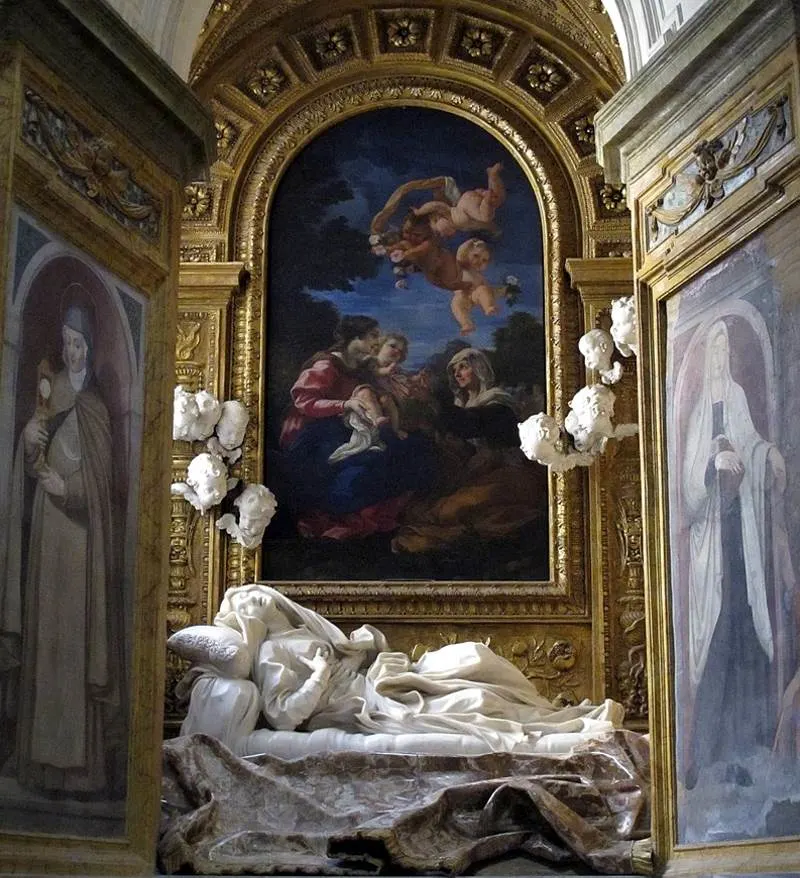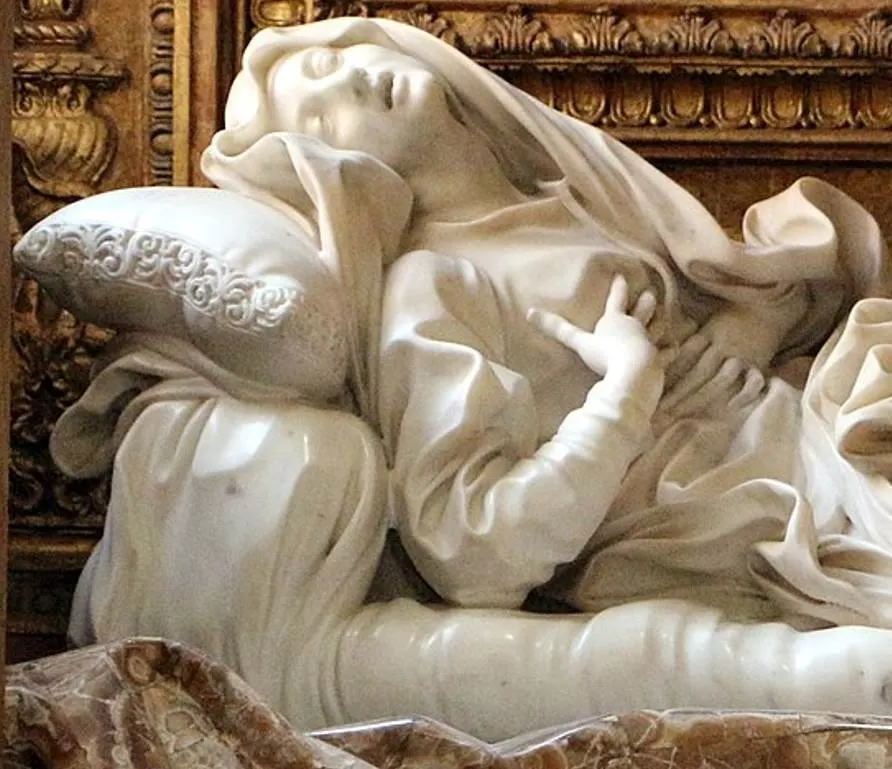If there is one Baroque artist who took the world of sculpture to another level in the 17th century, then it’s Gian Lorenzo Bernini (1598-1680).
That’s why he is often referred to as the founding father of Baroque sculpture, a notion exemplified by the amazing Bernini sculpture described in this article.
Let’s take a closer look at some of the most interesting facts about Blessed Ludovica Albertoni by Gian Lorenzo Bernini, one of the artist’s ultimate masterpieces.
1. It was completed in the final decade of the artist’s life
Gian Lorenzo Bernini was a child prodigy who moved with his family from Naples to Rome to pursue an artistic career.
When he first visited St. Peter’s Basilica as a child, he dreamed of producing magnificent sculptures to decorate the biggest church in the world.
He hardly left Rome during his adult years and created several monumental works of art in Rome, permanently leaving his mark on the city he loved so much.
Blessed Ludovica Albertoni was one of the final masterpieces by the artist who was already in his seventies when he started working on it in 1671. He eventually completed the work in 1674.

2. It depicts an Italian noblewoman who lived during the Renaissance
As the name of the sculpture implies, it depicts a woman named Ludovica Albertoni (1473-1533). She lived during the Renaissance and was born into a family of distinguished nobility in Rome.
She married another member of the Roman nobility named Giacomo della Cetera in 1494.

The couple had three daughters whom they raised in the Travestere neighborhood of Rome which is on the west bank of the Tiber River.
Her husband died in May of the year 1506 after a long illness. Not too long after this devastating event, she decided to join the Third Order of Saint Francis at the San Francesco a Ripa church in her neighborhood.
She spent the rest of her life spending her wealth on feeding the poor. Especially her work following the Sack of Rome in 1527 earned her the nickname “the mother of the poor.”

3. The sculpture was commissioned by one of the woman’s descendants
One of the descendants of Ludovica Albertoni was a 17th-century Cardinal named Paluzzo Paluzzi Altieri degli Albertoni (1623-1698).
Through the marriage of his nephew, he managed to get close to Pope Clement X. He managed to get adopted as the own nephew of the pope and got his surname “Altieri.”
This relationship also resulted in the beautification of Ludovica Albertoni so she earned the posthumous title of “Blessed.”
The cardinal was the man who spent a lot of time and money to improve her funerary chapel at the San Francesco a Ripa church. This included Bernini’s sculpture titled “Blessed Ludovica Albertoni.”

4. It took Bernini a lot more time than expected to complete the work
The chapel inside the church had become a place where Ludovico Albertoni was worshipped after she had earned the title of “Blessed.”
Several Baroque artists had offered their services but Bernini was awarded the commission. That’s partial because he offered his services for free and also because he was already the most renowned artist in the city for multiple decades.
Even though the aging artist was already in his early seventies at the time, he was still a much sought-after sculptor. It’s believed that he started working on this sculpture in 1671 but didn’t complete it until 1674.
That’s mainly because he was busy carving The Tomb of Pope Alexander VII and the Altar of the Blessed Sacrament at St. Peter’s Basilica at the time.
The sculpture was installed in Blessed Ludovica Albertini’s funerary chapel known as the “Altieri Chapel” on August 31, 1674.

5. The sculpture depicts a dramatic event in the woman’s life
The chapel was partially redesigned by Gian Lorenzo Bernini so the emphasis would be on his sculpture. The main change he made was to carve an arch behind the sculpture into an existing wall.
Bernini was a renowned architect as well as the designer of St. Peter’s Square. He already integrated a monumental setup for his famous “The Ecstasy of Saint Teresa” at the Basilica of Santa Maria della Vittoria in Rome.
This particular sculpture is the epitome of the Baroque style of sculpture that he developed as it shows the moment that LUdovia Albertoni received the mystical communion with God.
This allowed him to depict the woman with exaggerated drama as her head says back onto the pillow that rests on a sculpted mattrass.

6. Ludovica Albertoni is buried right beneath Bernini’s masterpiece
The sculpture isn’t the only work of art present inside the Altieri Chapel. It also features several paintings, including one depicting this woman.
The painting right behind Bernini’s work is titled “Blessed Ludovica Albertoni Distributing Alms” (1670). It was painted by the Baroque painter Giovanni Battista Gaulli (1639-1709), also known as “Baciccio.”
The sculpture rests on a red sarcophagus in which the remains of Ludovica Albertoni were interred.

7. How big is Blessed Ludovica Albertoni by Gian Lorenzo Bernini?
Bernini wanted to make a statement with this work in honor of a woman who sacrificed her luxurious position in society to help the poor.
He did so by producing an over-life-sized sculpture with dimensions of 90 × 210 centimeters (35.4 × 82.6 inches).
8. Where is the sculpture located today?
The sculpture was installed in the Altieri Chapel in 1674 and remains in situ today. The chapel is situated on the left side of the church of San Francesco a Ripa in Travestere.
This church is situated just walking distance from the Tiber River in the neighborhood just west of Rome’s historical center.
It faces the Piazza di San Francesco d’Assisi, one of the countless picturesque squares in the Italian capital.

